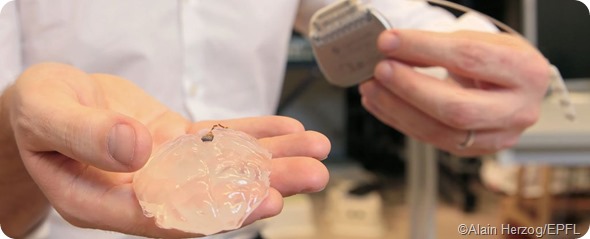Wireless brain–spine interface enables primates with spinal cord injury to walk again
By Sally Robertson, BSc
Scientists have developed a wireless brain implant that restores movement in the legs of paralyzed macaques, enabling the animals to walk again.

Signals from the brain’s motor cortex are recorded by the system and used to electrically stimulate nerves in the spine that are responsible for locomotion.
This is the first time a neuroprosthetic has enabled locomotion in primates and the engineers behind the achievement say the technology could one day be used to help people with spinal cord injuries walk again.
“With the system turned on, the animals in our study had nearly normal locomotion,” reports study author David Borton (Brown University, Rhode Island, USA).
When people walk, signals that originate in the motor cortex are transmitted to the lumbar region in the lower spine, where they activate motor neurons that aid the leg muscle movements required for walking. Spinal injuries to the upper and middle back (thoracic spine) can block this channel of communication between the brain and lower spine, thereby preventing the signals from triggering and coordinating this movement.
The goal of the current study was to wirelessly bypass the severed nerves that prevent this communication in spinal cord injuries and ensure the signals reach the lumbar region so that movement could be restored.
As reported in Nature, a tiny electrode array implanted in the brain of the macaques captures the signals produced by the motor cortex, which are then sent to a computer via a wireless sensor, for decoding.
The signals are then wirelessly sent back to an implanted electrical stimulator in the lumbar region, below the spinal cord injury. The spinal nerves that induce leg movement are then stimulated.
The researchers say this wireless restoration of movement is essential, because brain sensing systems that involve wires restrict the freedom of movement.
Doing this wirelessly enables us to map the neural activity in normal contexts and during natural behavior,” explains Borton. “If we truly aim for neuroprosthetics that can someday be deployed to help human patients during activities of daily life, such untethered recording technologies will be critical.”
The researchers stress that it may be a number of years before the technology can be used to help humans, but, nevertheless, it is a “pretty huge accomplishment… and hugely exciting to get a glimpse of the potential of this wireless device.”
The neural interface does require further development, says the team. The wireless signals are currently only sent from the brain to the legs, while in regular walking, signals are sent back to the brain from the legs and feet, in order to aid coordination and balance. Borton and colleagues say figuring out how this can be achieved will be their next step.